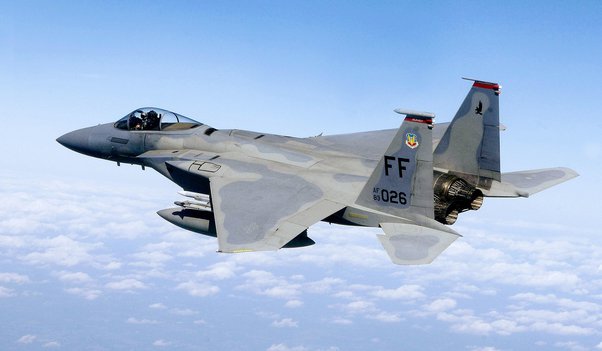In May 2025, India launched a military operation called Operation Sindoor after a deadly terror attack in Pahalgam, Jammu & Kashmir, which killed 26 civilians. The Indian Air Force responded using advanced fighter jets like the Rafale, marking a turning point in how modern wars are fought—not just with bombs and missiles, but with digital tricks and high-tech deception.
Rafale X and the Ghost Jets of Operation Sindoor
India used its top fighter jets—Rafale, Mirage 2000, and Su-30MKI—to carry out airstrikes on nine terror camps located in Pakistan and Pakistan-occupied Kashmir (PoK). These jets fired precision-guided weapons like SCALP cruise missiles and Spice-2000 bombs, but never crossed into enemy airspace.
What stood out in this operation wasn’t the aircraft or the bombs—it was a 30-kg smart decoy called X-Guard. This device, developed by Israel’s Rafael Advanced Defense Systems, hangs behind a jet on a cable. It tricks enemy radars and missiles by copying the radar signal of the actual jet and sending out fake signals to confuse them.
The X-Guard, using AI and DRFM tech, works with the SPECTRA system on Indian Rafales to deceive threats in real time. Despite delivery delays, India used it during Operation Sindoor—and it proved effective.
🔥 Ukraine’s drone strikes breach deep into Russian cities, hitting Kronshtadt plant and Splav
Pakistan claimed to shoot down five Indian jets, including three Rafales. But India and international observers said these were likely X-Guard decoys, not real aircraft.
Importantly, India lost no jets, showing that modern decoys can outsmart even advanced Chinese PL-15E missiles and shift the balance of air power.
F-35 and Iran: Did ALE-70s Save the Day?
Just a few weeks after India’s Rafale-led operation, a similar event unfolded in the Middle East. In June 2025, Iran claimed to have shot down four Israeli F-35I Adir stealth fighter jets near Tehran. One of the pilots, Iran said, had been captured alive—and was a woman.
These claims followed Israeli media reports suggesting that the Mossad, Israel’s intelligence agency, had set up a drone base near Tehran. Iranian media channels like Press TV and Tehran Times published daily updates, claiming that Iranian forces had downed one jet after another.
On June 15, Iranian state news announced that they had destroyed the third F-35. The next day, headlines claimed they had taken down a fourth. If true, Iran would have become the first country to shoot down F-35s in combat, just weeks after Pakistan’s claims of downing Indian Rafales.
But the media failed to show any photos, display wreckage, present radar data, or provide any proof. Israel dismissed the claims as baseless lies, and no visual or physical evidence surfaced to support Iran’s story.
Durov’s Arrest Leads to Diplomatic Tensions; UAE Cancels $20 Billion Rafael Deal
One likely explanation is the ALE-70 decoy system by BAE Systems. Stored under the F-35, it deploys in under two seconds, trailing on a fibre-optic cable to mimic the jet’s radar signature and jam incoming missiles.
Each F-35 can carry up to four ALE-70s, costing about USD 56,375—far less than a $100 million jet or a pilot’s life.
While Israel hasn’t confirmed using ALE-70s, experts believe they do or use a similar system. If the F-35s returned safely from Iran, these decoys likely played a key role—turning Iran’s claimed kills into ghost stories.
Rafale X and the New Face of Aerial Deception
What happened in India and Israel tells a clear story: air combat is no longer just about real aircraft and visible threats. In both cases, military forces used decoys like X-Guard and ALE-70—either confirmed or suspected—to protect their fighter jets from enemy fire.
Traditionally, military analysts measured air battles by counting how many enemy jets each side shot down. Today, that’s no longer the only marker of success. A country might say it has shot down a jet, but if that jet turns out to be a smart pod trailing behind the real one, the scoreboard becomes confusing.
In India’s case, Pakistan announced that it had hit multiple jets, but India lost none. That’s likely because X-Guards were doing their job, making Pakistan’s radar systems see ghosts.
⚡ India’s hypersonic shockwave: Mach 10 missile shatters defense limits under Project Vishnu
In Iran’s case, four F-35 shootdowns were reported, but without any proof. Given the advanced tech onboard the F-35s, such as the ALE-70 decoys, it’s highly likely that the missiles locked onto phantom targets, not the real jets.
Both operations show how misdirection, digital deception, and electronic warfare tools are now at the heart of modern air battles. Fighter jets are no longer just machines that fly fast and shoot far. They are now platforms carrying smart tech that can trick the enemy into seeing something that isn’t there.
These ghost jets and phantom kills prove that the battlefield has entered a new era of silent, invisible combat—where what you see might not be what’s real.
